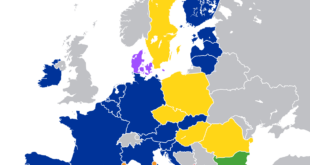TOPICS COVERED: Structure, organization and functioning of the Executive and the Judiciary—Ministries and Departments of the Government; pressure groups and formal/informal associations and their role in the Polity.
Context:
The government is planning to introduce the National Manuscripts Bill, 2023
Key details:
What is a manuscript?
- A manuscript is a handwritten composition on paper, bark, cloth, metal, palm leaf or any other material dating back at least seventy-five years that has significant scientific, historical or aesthetic value.
- Lithographs and printed volumes are not manuscripts.
- Manuscripts are distinct from historical records such as epigraphs on rocks, firmans, revenue records which provide direct information on events or processes in history.
- Manuscripts have knowledge content.
- While 75% of the existing Indian manuscripts are in Sanskrit, 25% are in regional languages
Need for the law:
- The Bakhshali manuscript, an ancient Indian mathematical text written on birch bark, is considered to be the earliest recorded example of the use of zero.
- The seminal text, dating back roughly to the third or fourth century AD, is in one of the Bodleian Libraries of the University of Oxford
- Many other Indian manuscripts lie in libraries across the globe or are with private collectors, both in India and abroad.
Aim of the law:
The primary aim of the Bill is to:
- document and catalogue Indian heritage texts wherever they may be and in India or abroad,
- maintain accurate and up-to-date information about them, and
- detail the conditions under which they may be consulted.
National Manuscripts Authority:
- The Bill envisages setting up a 10-member National Manuscripts Authority (NMA).
- While the Culture Minister will be the Chairperson of this body, the members will include:
- the Secretaries of Culture, Finance and Education,
- the Vice-Chancellor of Central Sanskrit University,
- special invitees representing the States, and
- private agencies
- The National Manuscripts Authority will be the apex policy-making body with regard to digitisation, conservation, preservation, editing, and publication work of manuscripts.
- The NMA will have the powers of a civil court to regulate the allocation of access to manuscripts and will also have an investigation wing for the purpose of conducting an inquiry into thefts and desecration of texts.
- It will also ensure that the manuscripts are not lost by damage or theft.
- It can collaborate with universities and other educational institutions or agencies to provide fellowships and scholarships for study of manuscripts.
- The NMA will also prepare a dedicated digital portal for indexing, cataloguing, uploading, and downloading copies of manuscripts.
- The special body will be vested with the right to take over a manuscript from a private owner based on the uniqueness and the importance of the content.
SOURCE: THE HINDU, THE ECONOMIC TIMES, PIB
 Chinmaya IAS Academy – Current Affairs Chinmaya IAS Academy – Current Affairs
Chinmaya IAS Academy – Current Affairs Chinmaya IAS Academy – Current Affairs



